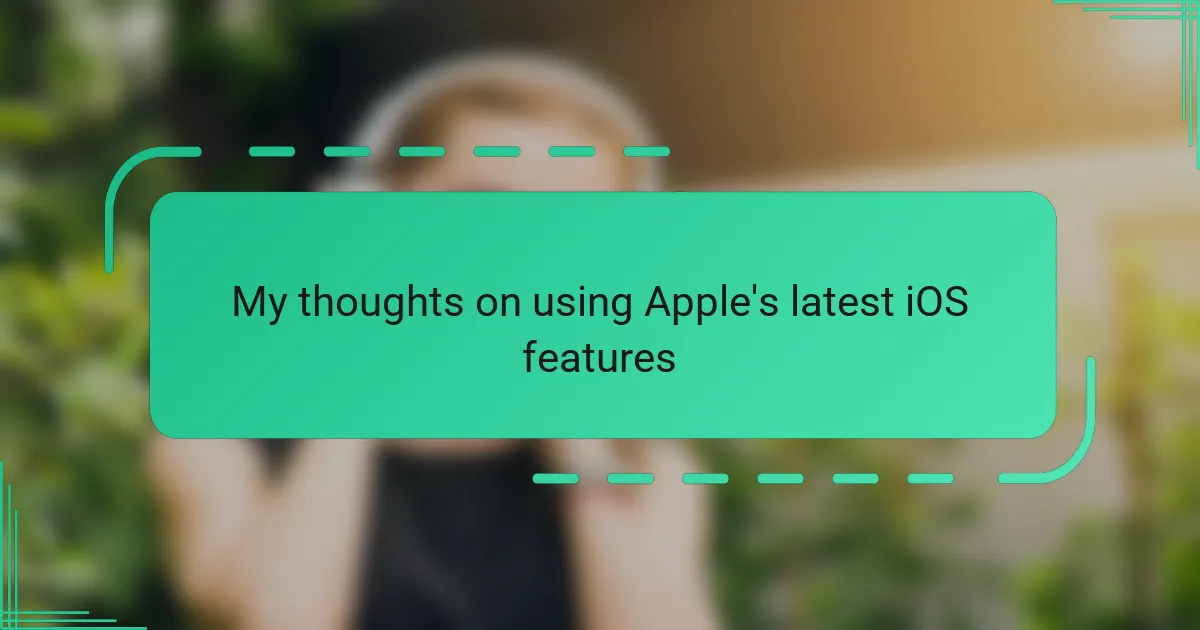Key takeaways
- Virtual reality (VR) creates immersive experiences through advanced hardware and software, allowing users to feel connected to digital environments.
- Oculus devices offer a range of accessible options, providing upgrades in storytelling, display quality, and ergonomic design for enhanced user comfort and immersion.
- Effective VR exploration requires careful setup, including adjusting headset fit, pacing sessions to prevent fatigue, and creating a dedicated play area to enhance safety and freedom of movement.
- Documenting experiences, including sensations and technical issues, can deepen understanding and appreciation of VR technology.
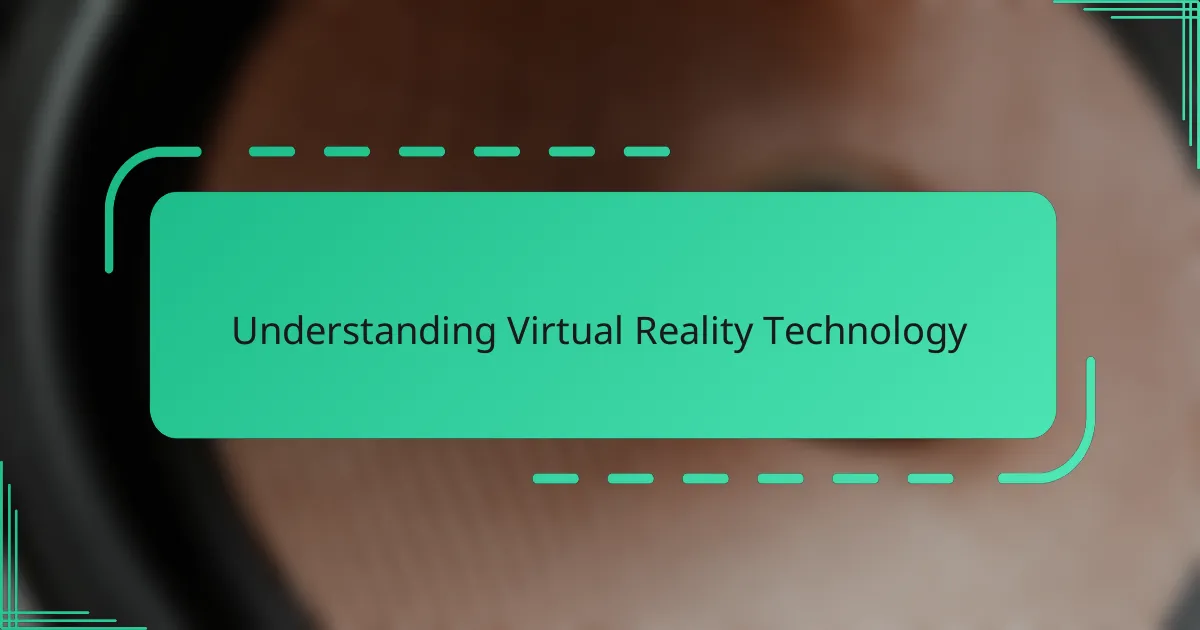
Understanding Virtual Reality Technology
Virtual reality, to me, feels like stepping into a completely new world without leaving my living room. It’s all about creating immersive experiences using hardware like the Oculus headset, which tracks your movements and adjusts the visuals accordingly. Have you ever wondered how your brain is tricked into believing a virtual environment is real?
From my experience, VR is powered by a combination of sensors, lenses, and software working together to simulate depth and space. The precision with which the headset responds to even the slightest head turn amazed me—I felt a unique connection to the digital realm. It’s this seamless integration of technology and perception that makes VR so captivating.
Understanding how VR technology works helped me appreciate the sheer amount of innovation behind those crisp visuals and responsive controls. Knowing the technical side doesn’t take away the magic; rather, it enhances the excitement each time I dive back into virtual adventures. Have you tried breaking down the technology and realized how much effort goes into making it feel effortless?
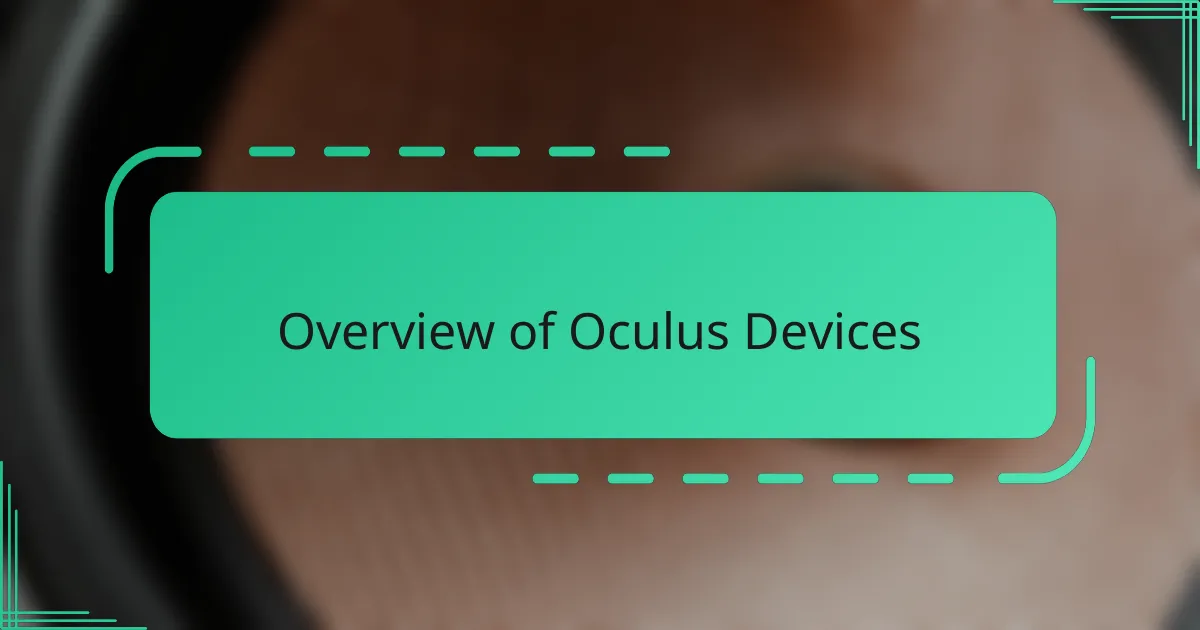
Overview of Oculus Devices
Oculus devices, from my perspective, are the cornerstone of accessible virtual reality. I’ve tried a few models, and what stood out to me was how each headset felt like an upgrade in storytelling—a better screen, improved sensors, and a lighter design. Have you ever slipped on a headset and instantly felt like you were somewhere else? That’s the magic Oculus aims for.
What really impressed me was the range Oculus offers: from standalone devices like the Quest series that don’t need a PC, to the Rift models that plug into powerful computers for high-end experiences. Personally, using the Quest gave me freedom—I wasn’t tethered by wires, which made my experiments with VR feel more natural and less like work.
I’ve noticed Oculus continually refines their controllers and tracking systems too. The way they capture hand movements and gestures made me feel more connected inside virtual worlds than I expected. It makes you wonder—how much does hardware shape the way we experience VR? For me, Oculus devices offer a compelling answer.
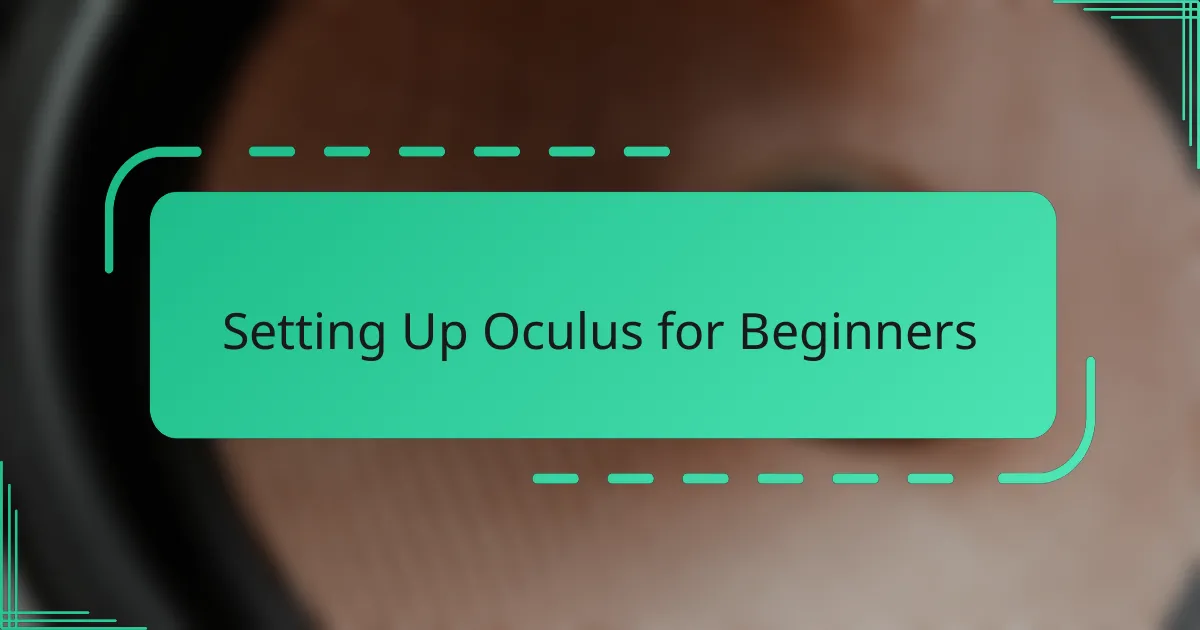
Setting Up Oculus for Beginners
When I first unboxed my Oculus headset, the setup felt a bit daunting—like assembling a new gadget for the first time. But honestly, following the step-by-step instructions in the Oculus app made things click quickly. Have you ever noticed how having a clear guide can turn confusion into excitement? That’s exactly what happened to me.
Connecting the headset to Wi-Fi and creating my account were straightforward, though I did spend a little extra time adjusting the straps for comfort. I remember thinking, “This needs to feel just right, or the experience won’t be as immersive.” It’s those small adjustments that made all the difference when I finally put the headset on.
The setup also involves calibrating the sensors, which was surprisingly fun—walking around to map my play area felt like prepping a stage for a performance. Don’t underestimate how important this step is; it helped me move naturally without worrying about bumping into furniture. Have you tried this? It really sets the foundation for a smooth VR journey.
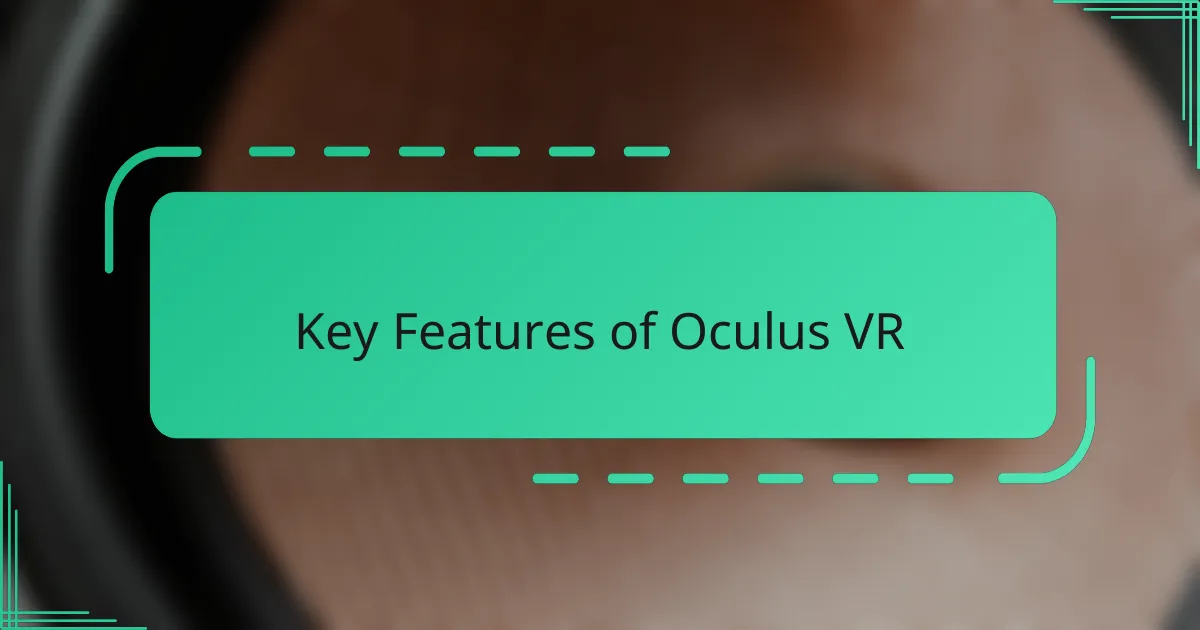
Key Features of Oculus VR
One thing that struck me immediately about the Oculus VR was its inside-out tracking feature. Unlike other systems relying on external sensors, the headset uses built-in cameras to precisely track my movements, freeing me from tangled wires or extra gadgets. Have you ever felt that weight lifted—just putting on a headset and moving naturally without worrying about your setup?
The display quality also caught my attention right away. The crisp resolution and wide field of view made virtual worlds feel incredibly real to me, enhancing my sense of presence in every experience. When I first looked around in VR, it wasn’t just about seeing images—it was about feeling fully immersed, like I’d stepped through a portal.
Then there’s the ergonomic design that really makes a difference over long sessions. I remember adjusting the headset multiple times on my first day, searching for that sweet spot where it felt secure but comfortable. Oculus nailed that balance, making it easy to forget I was even wearing it. Isn’t that the kind of comfort you want when you’re ready to get lost in another world?
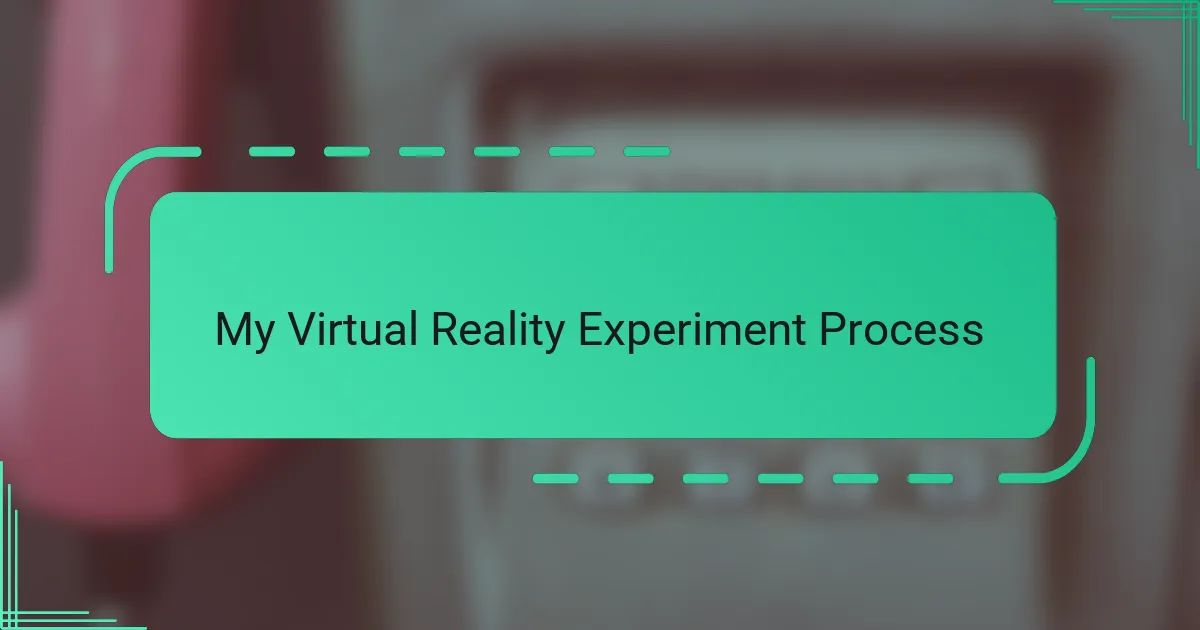
My Virtual Reality Experiment Process
My experiment began with careful planning—I wanted to explore how different types of VR content felt through Oculus, from games to immersive education apps. I allocated specific sessions for each category to truly notice how the experience shifted with context. Have you ever tried focusing on one aspect of VR at a time? It really opened my eyes to the versatility of the technology.
Next, I paid close attention to how the hardware influenced my interaction. For instance, I experimented with different controller grips and movement styles to see what felt most natural. It surprised me how small tweaks could make a huge difference in comfort and immersion. Isn’t it fascinating how our bodies adapt to new ways of interacting?
Lastly, I documented every sensation and technical hiccup along the way—like occasional tracking glitches or moments of bliss when the virtual environment felt utterly real. Reflecting on these moments helped me understand not just the strengths of Oculus VR but also its growing edges. Have you ever kept notes on your tech experiments? I found it added depth to my experience and fueled my curiosity even more.
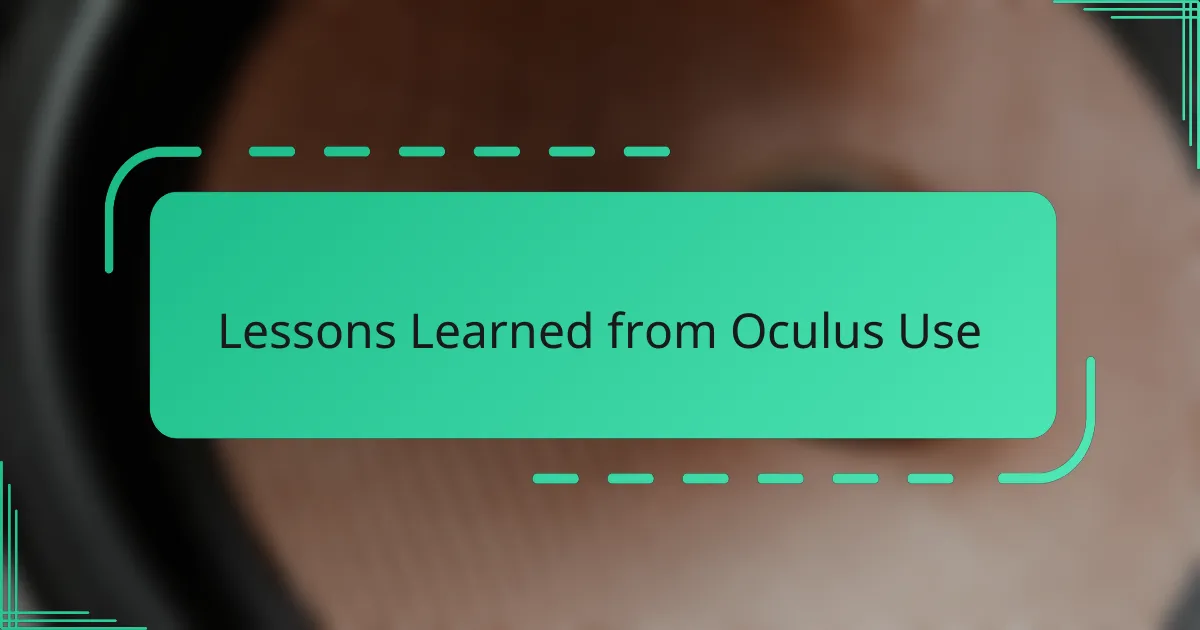
Lessons Learned from Oculus Use
I quickly realized that comfort isn’t just a luxury—it’s essential. After a couple of longer sessions, I noticed that even slight headset discomfort pulled me out of the immersive experience. Have you ever tried adjusting the straps mid-game? That small act made me appreciate how crucial fit and weight distribution are for truly losing yourself in VR.
Another lesson was about pacing. Diving into VR for hours seemed thrilling at first, but I found that shorter, focused sessions kept my enthusiasm high and prevented fatigue. It made me wonder—how often do we push technology beyond what our bodies can comfortably handle? For me, balancing excitement with moderation improved both my enjoyment and focus.
Lastly, I learned the importance of a dedicated play area. Setting boundaries in my physical space helped me feel safe and free to move without hesitation. Have you ever felt that awkward pause, worried about knocking something over? Creating a clear VR zone eliminated that tension and let me fully embrace the virtual world’s possibilities.
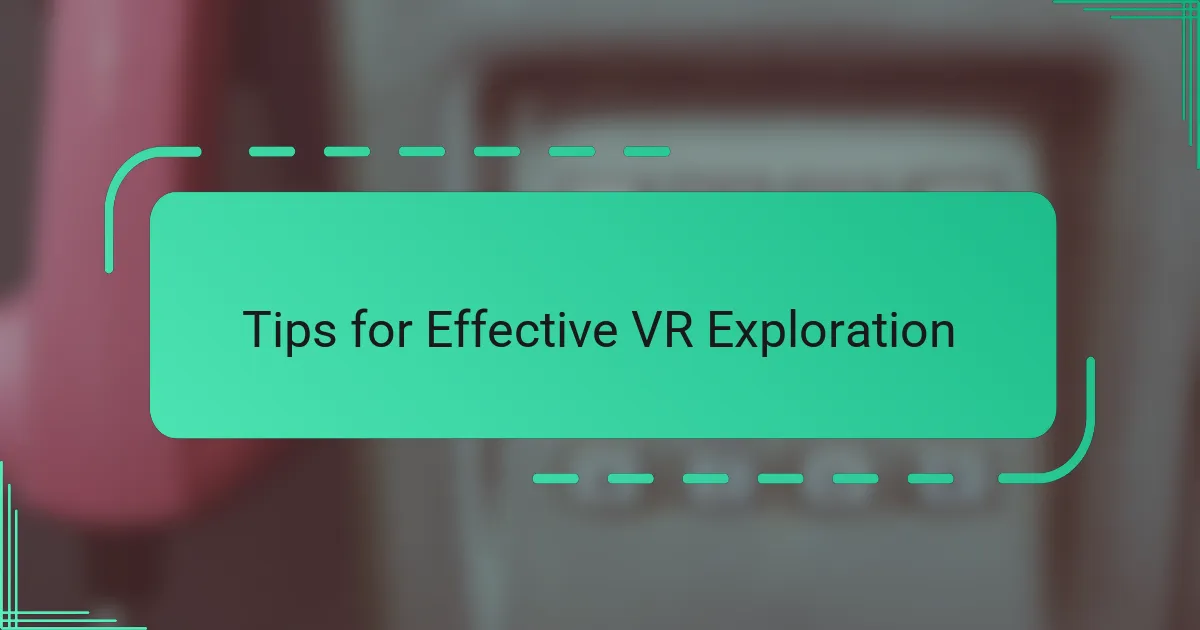
Tips for Effective VR Exploration
Finding a comfortable fit for the headset was a game-changer in my VR exploration. I remember those early moments when a slightly loose strap kept pulling me out of the experience—I quickly learned that taking a minute to adjust the fit made all the difference in staying immersed. Have you ever noticed how something as simple as comfort can either invite you deeper into VR or push you away?
I also found that pacing my sessions was key. At first, I was eager to dive in for hours on end, but fatigue soon crept up and dulled the thrill. Shorter, focused bursts of VR play kept my excitement alive and made every moment feel fresh. Doesn’t it make sense that balancing enthusiasm with breaks helps maintain the magic?
Finally, I can’t stress enough the value of organizing your physical space before putting on the headset. Mapping out a clear play area made me feel safe to move around freely without that nagging worry of bumping into furniture. Have you tried this? It’s amazing how creating a dedicated VR zone can turn exploration from cautious to confident.

